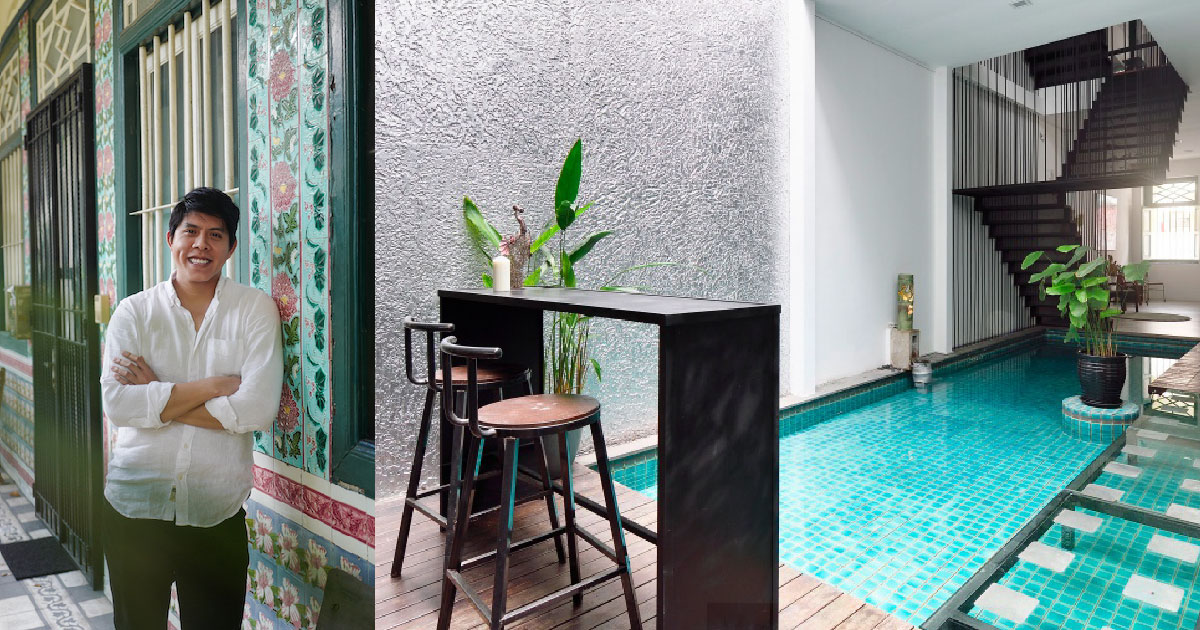Co-living is all the rage right now with players like Lyf, Hmlet, and Cove popping up all over the island in recent years.
Hmlet was recently featured on LinkedIn’s list of top Singapore startups in 2020. Earlier in July, the startup also raised US$40 million (S$54.8 million) in a Series B round.
This is a testament to the growing traction that co-living is experiencing in Singapore.
Compared to regular rental, co-living offers shorter leases, communal events and spaces to foster a community bond.
However, when we think of co-living spaces, we usually conjure up images of a shared space in new condominiums.
Singapore-based Figment, a new player in the industry, is shaking things up by turning co-living into a luxury cultural experience.
Shophouses As A Singaporean Work of Art

Figment founder Fang Low grew up in and around conservation shophouses in Singapore, raised by art-hoarding parents.
While completing a business degree at New York University, he found a job at fine art auction house Christie’s and this work experience fuelled his interest in art.
In his previous job as an investment banker at Goldman Sachs, he also moonlighted by curating art exhibitions out of vacant shophouses.
In an interview with Vulcan Post, the 32-year-old shared that he recently graduated with an MPA from Harvard and an MBA from Wharton.
While curating an exhibition in a shophouse, he realised that many exhibition-goers had enjoyed viewing the shophouses just as much as the art.
“It struck me that these shophouses were just as valid as Singaporean works of art,” said Fang.
He added that many people had little knowledge that one could actually live in a shophouse. There are 857 residential shophouses in Singapore but most have exorbitant rental prices.
This prompted him to launch Figment with its first-ever experimental Case Study Home, Canvas House designed by Ministry of Design.
For this new initiative, Figment gave three local design studios total autonomy in transforming three shophouse interiors.

It was total creative destruction. We had agreed to let Colin Seah paint my childhood home, a two-storey baroque shophouse on Blair Road, entirely white, from floor to ceiling.
Figment was and still is the reset button, reimagining adaptive reuse of our shophouse vernacular as boutique homes and more.
Fang Low, Co-founder and CEO of Figment in an interview with Vulcan Post
Originally built in the 1920s, a shophouse situated at Tanjong Pagar Blair Plain was boldly redesigned by designer Colin Seah of Ministry of Design.
The shophouse was also Fang’s childhood home, which had housed three generations of Lows.
After its redesign, it was named Canvas House as its interior was completely whitewashed to form a blank slate for residents.
A Hyper-Local Living Space

According to Fang, many of us require “proper anchors in the humanities to better inform the way we live.”
One such anchor, or work of art, is the shophouse, with its Islamic rain eaves, Chinese-inspired stuccoes, and European pilasters.
“It is an authentic manifestation of Singapore we can truly be inspired by,” said the Harvard graduate.
Figment carefully curates everything in its living spaces from various local creatives, and each shophouse is designed to suit the history of the area it is situated in.
We see ourselves simply as stewards of our culture and heritage, and aim to become a platform for showcasing elements of local art, architecture and design.
Fang Low, Co-founder and CEO of Figment in an interview with Vulcan Post
The startup’s attention to detail seems to have paid off.
Since February this year, Figment has “more than doubled” the number of shophouses under its management to 16.
The same can be said for its revenue and number of members.
Boutique In Every Sense Of The Word

Fang’s vision is for Figment to be a boutique home operator, revitalising shophouses in various historic districts for the creative class.
Like every co-living space, community events are important.
At Figment, curated community events take the form of cultural activities such as private dinners with local chefs, and cocktail mixing sessions with top bartenders
However, living in a boutique shophouse comes with a price. A quick scroll through the Figment website shows that the lowest rate is S$1,500 for a 245 square feet room in the Dicot House at Joo Chiat.
Prices can go all the way up to S$3,450 for a 490 square feet room with an ensuite bathroom at the Allenby House at Jalan Besar.
Fang is aware that Figment’s shophouse suites might not be the most accessible product on the market at their current price points.
However, he is confident that Figment has managed to democratise shophouse living as people no longer need to pay upwards of S$8,000 to rent out an entire shophouse.
Currently, he has plans for Figment to manage HDB establishments such as Selegie House with “character”.
That said, he is relieved that “it increasingly seems that we are not singularly crazy, and that there are many others like us out there who ‘get it’ and are excited by the prospect of living in a heritage shophouse.”
“I like to say Figment is not for everyone, but everyone is welcome.”
Featured Image Credit: Figment, Expat Living








